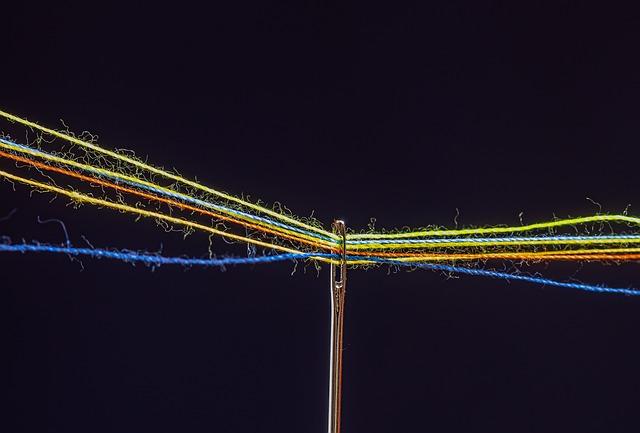Table of Contents
- Understanding the Roots and Modern Interpretations of Gaia Worship
- The Role of Gaia Worship in Contemporary Environmental Movements
- Exploring Rituals and Practices Associated with Gaia Worship
- How Gaia Worship Inspires Sustainable Living Practices
- Connecting with Nature: Personal Insights Through Gaia Worship
- Q&A
- Final Thoughts
Understanding the Roots and Modern Interpretations of Gaia Worship
To truly grasp the essence of Gaia worship, one must embark on a historical journey to its roots, deeply embedded in ancient mythology. Revered initially in Greek culture, Gaia was the earth goddess, symbolizing the fertile planet from which all life springs. Stories of Gaia often depicted her as the mother of giants, oceans, and the heavens—an intrinsic force in ancient cosmologies. Through the ages, her presence was a testament to the profound relationship between earth and humankind, echoing across various cultures and epochs. Primitive societies often celebrated Gaia through rituals, festivals, and ceremonies, underscoring her importance to agriculture and survival.
In modern times, Gaia worship has evolved beyond its mythological origins, embracing a more philosophical and environmental stance. Today’s interpretations often intertwine with the principles of sustainability and conservation, resonating with individuals striving for harmony with the earth. Eco-centric movements and spiritual communities have adopted Gaia worship, emphasizing the interconnectedness of all life. These contemporary practices might include meditative gatherings, ecological rituals, and educational workshops aimed at fostering a deeper environmental consciousness. This evolution illustrates the adaptability of ancient beliefs to the challenges and needs of the modern world.
| Ancient Gaia Worship | Modern Interpretations |
|---|---|
| Mythological stories | Environmental philosophy |
| Agricultural rituals | Sustainability practices |
| Cultural festivals | Eco-spiritual gatherings |
The resonance of Gaia in contemporary culture highlights how ancient spiritual practices continue to influence modern lifestyles. Today, Gaia worship is less about venerating a deity and more about instilling an ethos of responsibility towards the earth. People are increasingly drawn to the concept as a framework for understanding environmental stewardship and climate action. Whether through personal reflection or community initiatives, the reverence for Gaia today echoes the age-old quest for balance with nature, inspiring generations to embed profound respect for the planet into their daily lives.

The Role of Gaia Worship in Contemporary Environmental Movements
In a world increasingly concerned with environmental conservation, the revival of Gaia worship offers a fascinating bridge between ancient spiritual practices and modern ecological awareness. Rooted in the concept of Earth as a living, interconnected entity, Gaia worship underscores the importance of nurturing and protecting the planet. This perspective invites individuals to view environmental challenges as not just scientific or political issues, but also spiritual and moral imperatives. As a result, many contemporary ecological movements find common ground in the principles of Gaia worship, embracing its call for harmony and respect towards nature.
Contemporary environmental movements benefit from the incorporation of Gaia worship by adopting its holistic approach to sustainability. This philosophy champions the idea that all living beings are interconnected, promoting an ethic of stewardship that transcends individual gain. By treating the Earth as a sacred entity, these movements encourage practices that align with ecological balance, such as:
- Implementing sustainable agriculture techniques
- Promoting renewable energy usage
- Advocating for biodiversity conservation
- Supporting eco-friendly urban planning
Another dimension where Gaia worship influences environmental activism is through the community-building it fosters. Many environmental groups harness the emotionally resonant narratives of Gaia worship to inspire collective action and public engagement. This spiritual framework provides a shared language and set of values that unite activists from diverse backgrounds. It encourages collaboration beyond traditional environmentalist circles, inviting artists, educators, and community leaders to join the conversation, thereby expanding the impact of environmental advocacy efforts worldwide.

Exploring Rituals and Practices Associated with Gaia Worship
The reverence for Gaia, often embodying the Earth as a living organism, invites a tapestry of rituals and practices steeped in ancient traditions and modern adaptations. Many practitioners find solace in connecting with nature through ceremonies under the open sky, fostering a deep kinship with the environment. Essential practices might include meditative walks through natural landscapes, symbolically guarding and nurturing the Earth as a divine entity. These rituals are often intimate, performed alone or within small communities, to maintain a personal, spiritual bond with the Earth.
- Conducting seasonal festivals such as solstices and equinoxes
- Incorporating elements like earth, water, fire, and air in personal altars
- Invoking Gaia through chants, dances, or drumming circles
Understanding the vitality of balance and sustainability, those who honor Gaia often practice eco-conscious living. This lifestyle underscores a practical devotion, integrating environmental mindfulness into daily routines. Conscious consumption and zero-waste initatives are frequently emphasized, forming the backbone of the lifestyle choices adopted by followers. Community gatherings aim to discuss and promote sustainable practices, leading to initiatives like community gardens and conservation projects. The table below showcases various ways individuals can pay homage to Gaia through sustainable actions:
| Activity | Impact |
|---|---|
| Planting native trees | Enhances biodiversity |
| Participating in cleanup events | Reduces local pollution |
| Composting organic waste | Enriches soil nutrients |
Meditative practices also play an integral role, providing moments of reflection and gratitude towards the richness of the Earth. Techniques vary from silent forest bathing – a mindful immersion in the natural environment – to more structured group meditations focusing on visualizing Earth’s healing. Art and creativity often serve as expressive outlets, transforming personal experiences with nature into sculptures, paintings, and even installations made from recycled materials. Such artistic endeavors don’t just celebrate Gaia’s beauty but also cultivate a deeper awareness and urge to protect the Earth’s charisma.

How Gaia Worship Inspires Sustainable Living Practices
Embracing Gaia worship leads many individuals towards a deeper connection with the Earth, driving them to adopt sustainable living practices. This spiritual perspective fosters a profound respect for the planet, encouraging holistic approaches to lifestyle choices. Key elements of Gaia worship inspire people to minimize waste and seek renewal in all aspects of life.
- Zero Waste Living: Followers often strive to live waste-free, promoting the idea that every resource should be used responsibly.
- Organic Farming: Organic practices not only enrich the soil but also honor the Earth by reducing chemical use and enhancing biodiversity.
- Renewable Energy: Solar, wind, and other renewable sources are embraced as they align with the harmony of nature, decreasing reliance on fossil fuels.
The principles associated with Gaia worship also encourage community-led initiatives that promote environmental stewardship. Many find themselves gravitating towards communal gardens or local co-ops, where shared efforts result in a reduced carbon footprint. Through collective action, communities are empowered and driven by the ethos of protecting and nurturing the Earth.
| Sustainable Practice | Environmental Impact |
|---|---|
| Composting | Reduces landfill waste and enriches soil naturally |
| Bike Sharing | Minimizes carbon emissions and promotes healthy lifestyles |
| Rainwater Harvesting | Conserves water and reduces dependence on municipal sources |

Connecting with Nature: Personal Insights Through Gaia Worship
Engaging in the practice of Gaia worship offers a profound opportunity to deepen one’s connection with the intricate tapestry of nature. Every rustling leaf and whispering breeze becomes a gentle reminder of the planet’s living spirit. This process of tuning into nature’s symphony invites a genuine sense of serenity and grounding. The practice encourages adherents to listen to the earth with open hearts, fostering a deep appreciation for natural cycles and rhythms. In an age marked by disconnection, followers often find solace in the symbiotic dance between humans and the environment, rekindling the ancient understanding of being a part of a larger ecological family.
Practitioners of these ancient traditions create personal rituals tailored to their unique environments and experiences. These may include activities like:
- Meditating by a flowing stream or under a canopy of stars
- Crafting offerings from natural materials, such as herbs or stones
- Engaging in guided visualizations that focus on connecting to Earth’s energies
For many, Gaia worship also involves a commitment to sustainable living, reflecting the belief that every small action can echo through eternity. Strategies for sustainable living might involve:
| Strategy | Description |
|---|---|
| Reduced Waste | Adopting practices to minimize environmental waste |
| Eco-Friendly Choices | Selecting products that have minimal impact on the ecosystem |
| Community Engagement | Participating in local environmental initiatives |
Such actions not only honor Gaia but also cultivate a personal ethos of respect and responsibility towards the planet. Through this interconnected practice, individuals often discover a renewed sense of purpose, harnessing the energies of the earth to nurture both themselves and the world they inhabit.



0 Comments